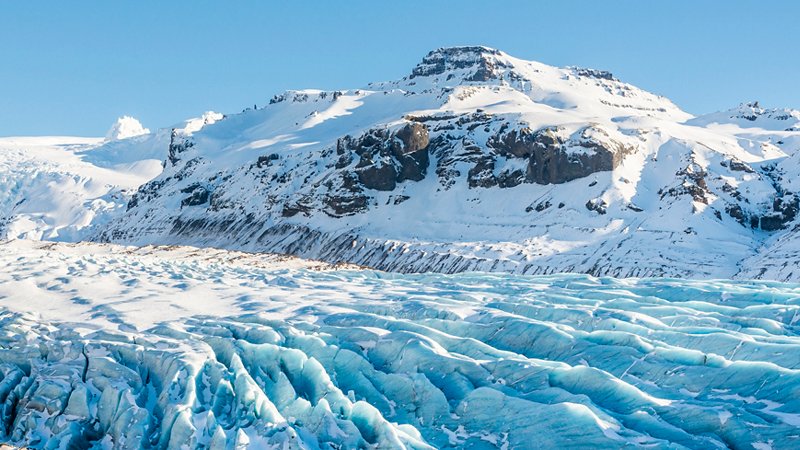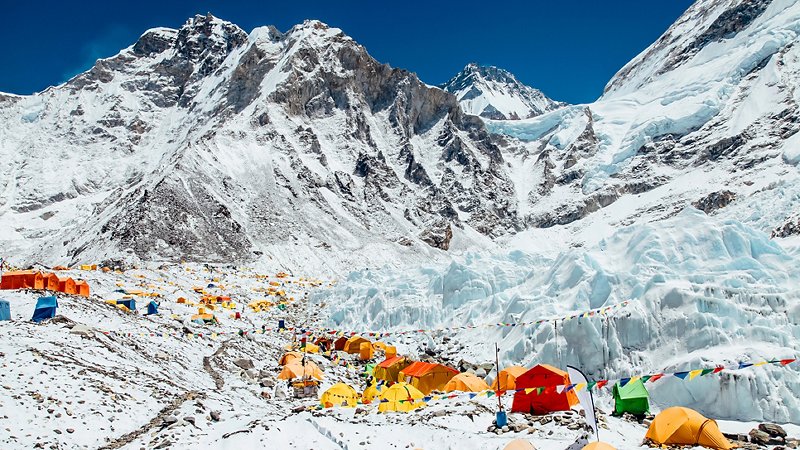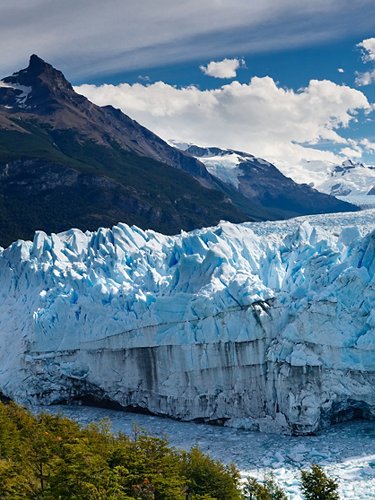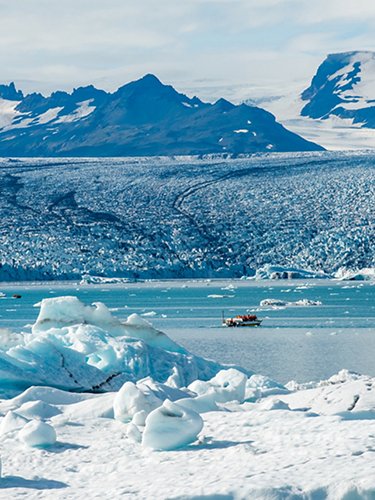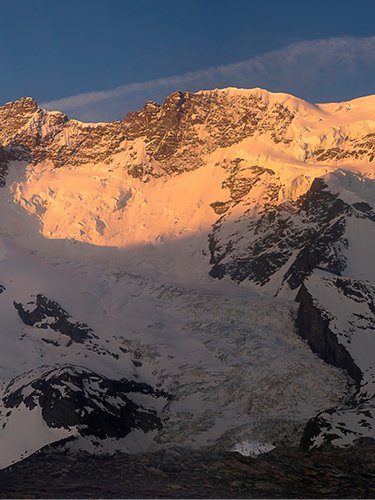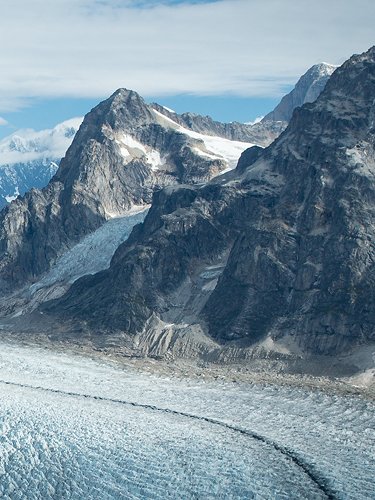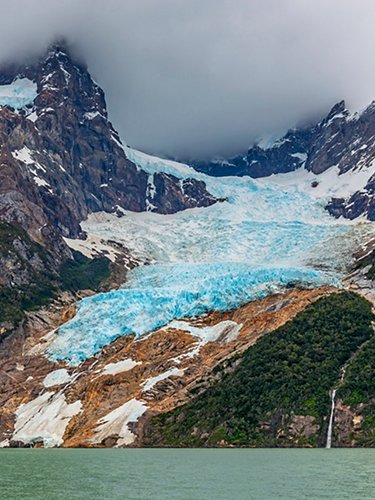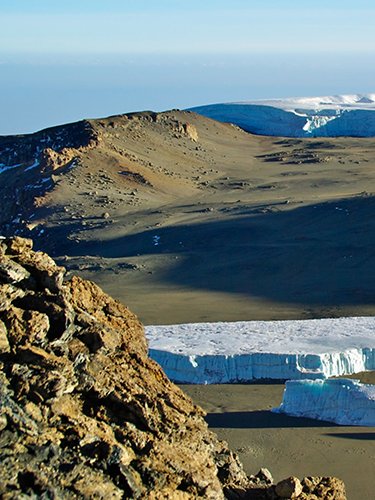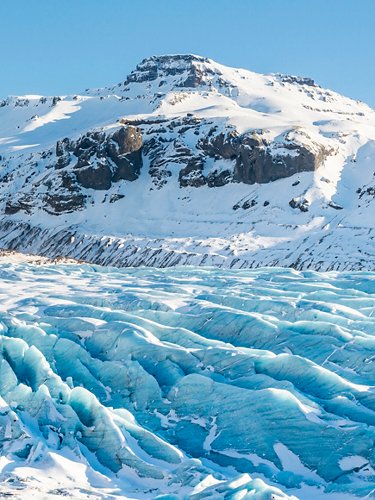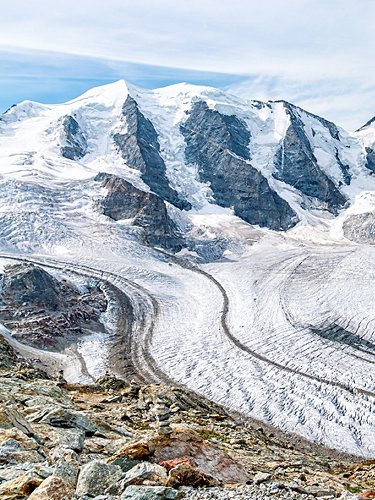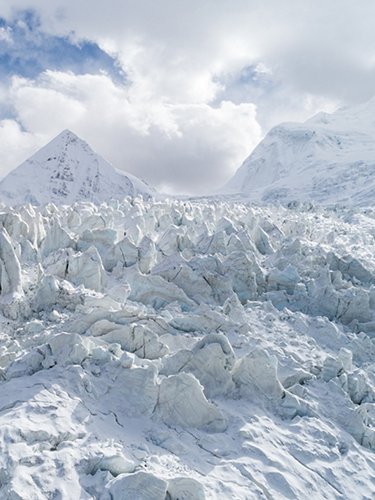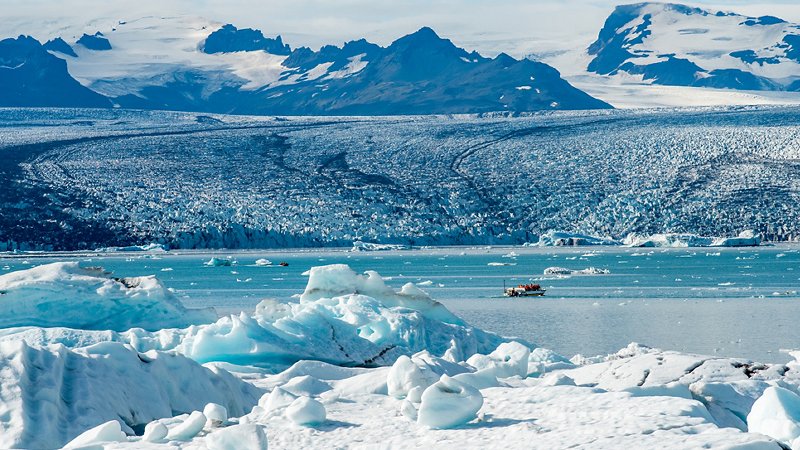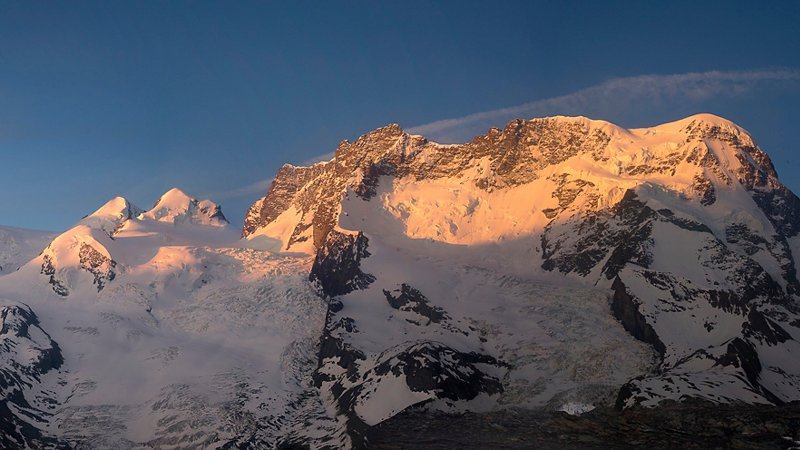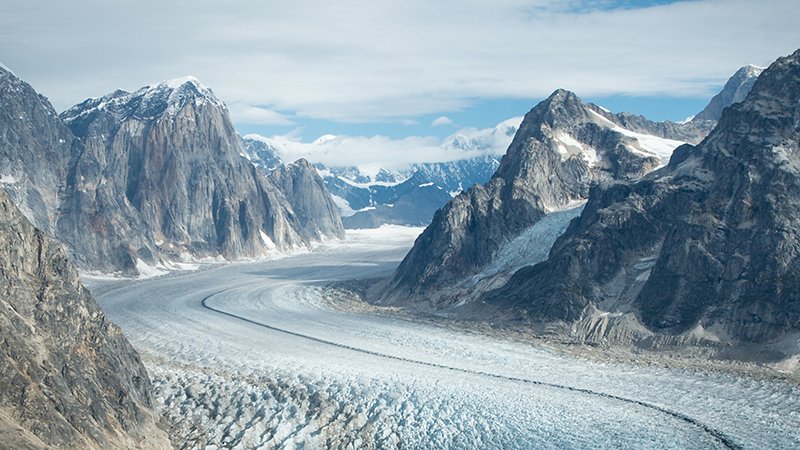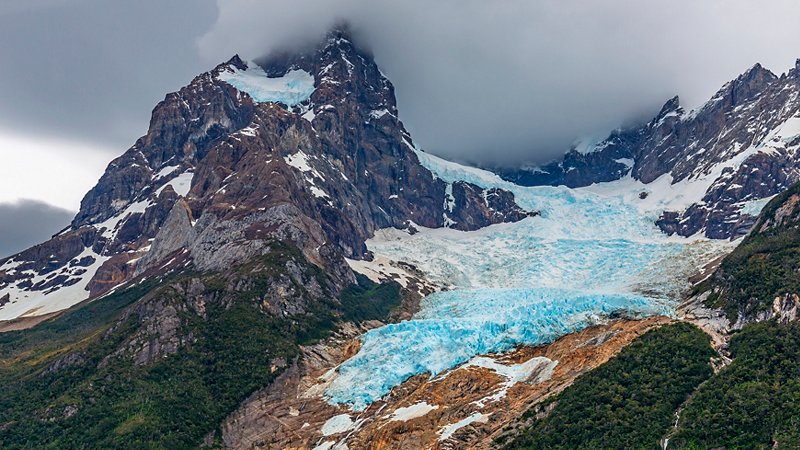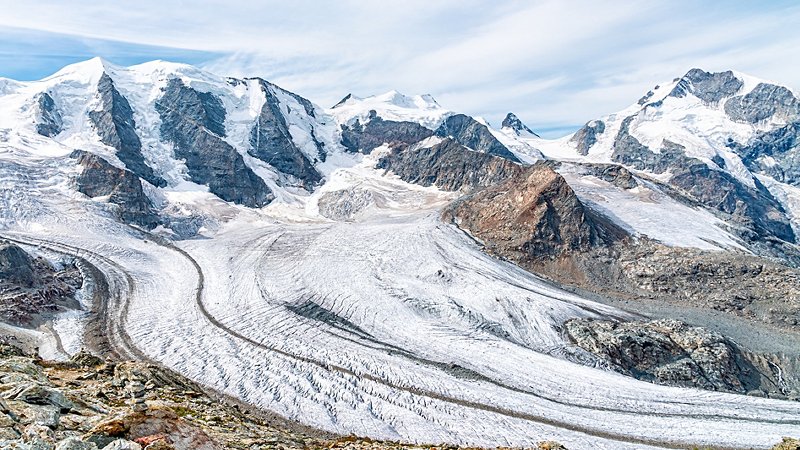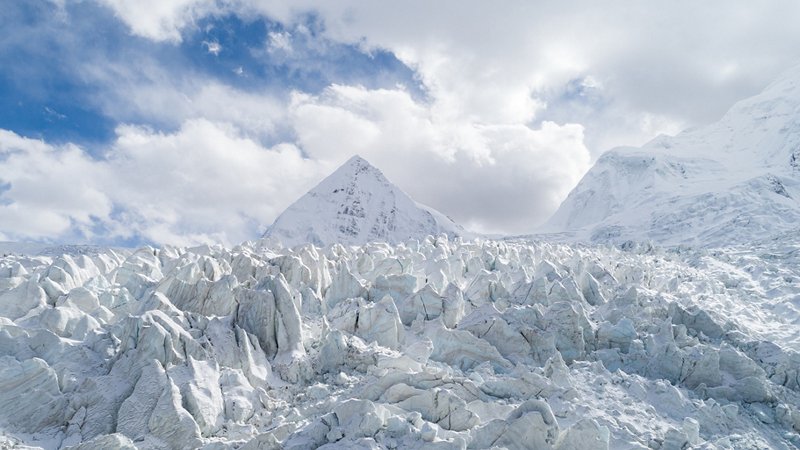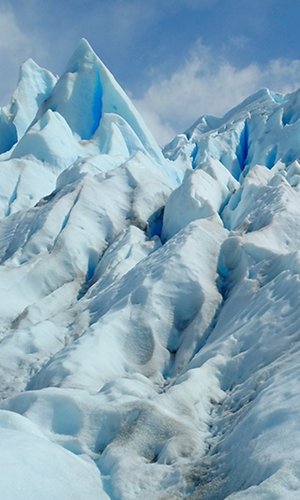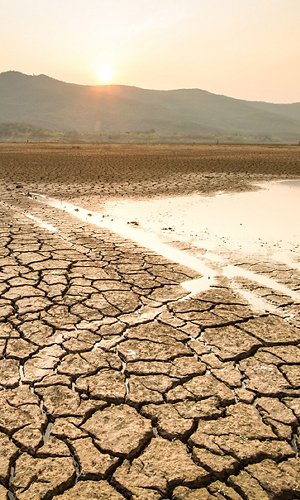Depending on their geographic location, the temperatures within and at the base of the glacier, where the glacier comes into contact with the bedrock, vary. This is why there is a distinction between cold or Polar glaciers, with temperatures that are constantly and entirely below zero, and temperate glaciers that may have higher temperatures on their surface and/or at the base, accompanied by melting phenomena: the presence or not, of water in the liquid state influences the behaviour of the glaciers, and the response to climatic variations is very different in the two cases. The former are to be found in the high latitudes, the latter in the lower latitudes, but at high levels, where the air becomes cool because of the altitude, and the heat of the low latitude is compensated by this effect: temperate glaciers are the glaciers we find in the Alps, but also particular glaciers as those which can be found in tropical or equatorial areas, such as the glaciers of Mount Kilimanjaro or Mount Kenya in Africa, or the glaciers in the Peruvian and Bolivian Andes.
Spectacular glaciers
